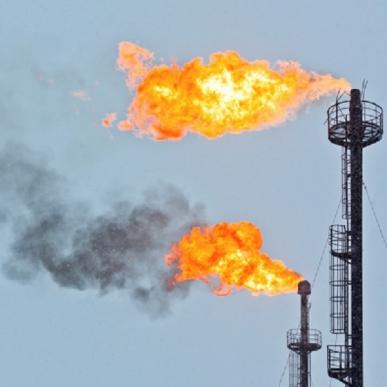Another Major Methane Study Shows Action is Needed Now to Reduce Emissions
 This commentary originally appeared on the EDF Voices Blog.
This commentary originally appeared on the EDF Voices Blog.
Mounting scientific evidence underscores the crucial importance of reducing methane emissions in the U.S. The latest study, published today in the journal Science, reviewed available data from the past 20 years and found that methane emissions from the U.S. natural gas supply chain are almost two times greater than current official estimates – flagging once again that methane emissions are a serious problem. However, the Stanford-led team also concluded that the current levels of methane leakage negates the climate benefit of switching to natural gas under some scenarios and not others, such as moving from coal-powered to natural gas electric generation.
As for what contributes to the higher than expected emissions, the study authors cited differing measurement techniques—including “bottom-up” direct measurement at the source, “top-down” readings from aircraft, and others—as well as the presence of “super-emitters” (a small number of sites or pieces of equipment producing a large share of emissions). Super-emitters are not easily sampled using most bottom-up direct measurement approaches. The team also spotlighted challenges associated with an increasingly ambiguous distinction between emissions from natural gas and oil production, both of which contribute methane to the atmosphere.
Other recent studies
This sobering assessment joins a growing list of recent studies that point to higher than expected levels of methane emissions from the oil and gas industry.
Just a few months ago, a Harvard led team published a paperin the Proceedings of National Academy of Sciences (PNAS)that found total methane emissions from all sources (e.g. livestock, landfills, oil and gas, etc.) were roughly 50 percent higher than U.S. Environmental Protection Agency estimates for the same time period, 2007 -2008.

This followed on the heels of the September 2013 PNASpaper, in which a University of Texas team looked at emissions from some activities associated with hydraulically fractured wells for the first time. The UT led bottom-up study was the first study released in EDF’s methane research series. Though it found total emissions for the production segment of the natural gas system to be similar to EPA estimates, it also found that emissions from some sources were much higher than EPA estimated – valves, compressors, and pipes located at the well pad, for example, all showed higher than estimated emissions. The study also found that emissions from well completions – at the end of the hydraulic fracturing process – were dramatically lower than EPA estimates where new emission controls were used. This is likely because in 2012, when the measurements were made, drillers were beginning to deploy the reduced emissions completions (REC) equipment required by EPA. RECs will be required for all new natural gas wells beginning in January 2015, but are not required for associated oil-and-gas wells. One clear policy implication was that REC equipment should be required across the board.
In August 2013, yet another study was released, this time by scientists with the National Oceanic and Atmospheric Administration and the University of Colorado at Boulder who are known for their expertise with top-down measurements. Published in Geophysical Research Letters, the paper reported alarmingly high levels of methane emissions from airplane readings gathered over an area of the Uintah Basin, Utah’s most active oil-and-gas region that includes production, gathering systems, processing and transmission stations.
These insights, combined with what we’re learning from the bottom-up studies highlighted in the Science paper, demonstrate that no single measurement method is sufficient to provide all the data required to understand emissions rates and sources. That’s why the diverse scientific teams EDF is working with across our 16 studies are using a wide range of techniques in tandem. (The Stanford study is not a part of EDF’s methane series, though EDF’s senior scientist Robert Harriss is a co-author.)
The Stanford paper is insightful work and we welcome the new perspectives it provides. Their survey of over 20 years of scientific literature makes an important contribution, and raises important issues about all measurement techniques in use. For example, self-selection bias may be a factor in bottom-up direct measurement studies, and top-down techniques have challenges in assigning attribution among sources. None of this takes away from the fact that these studies, despite their methodological differences, clearly indicate that methane emissions pose a serious threat to the climate. And while we work to deepen our understanding of the sources of methane emissions, there’s no question about the need for regulation to reduce these emissions.
Why methane matters
I know some are still not convinced that methane matters. A concern I hear is that reducing methane emissions is a distraction from the important work of reducing emissions of carbon dioxide (CO2). I agree that we need to remain focused on CO2 reductions, but by also reducing harmful emissions of short-lived climate pollutants such as methane, we can slow the rate of warming over the next couple of decades – something that CO2 reductions are unlikely to accomplish alone. And as I said, the threat is real. Over 40 percent of the warming experts expect to see in the next 20 years, as a result of today’s greenhouse gas emissions, will come from short-lived climate pollution that includes methane.
It is absolutely necessary for us to continue pushing as hard as we can to meet our obligation to future generations to leave a cleaner and safer world. But we also need to ensure that the shorter-term impacts of climate change – extreme weather patterns, long droughts and high temperatures seen across the country – are not intensified.
What EDF and a growing number of scientists are saying is that when it comes to emissions reductions, no one should choose between methane and carbon dioxide. It’s not an either/or scenario. Science has shown us that we need to reduce both if we want to protect the climate. We cannot afford to even consider a trade-off between current generations and future generations, which is what this comes down to. We need to protect both – and the only way to do that is to bring together our best ideas for reducing carbon dioxide AND methane emissions.
Reason for hope
There’s reason to hope that if we do this – taking the steps now to create parallel strategies to cut methane emissions from the oil and gas industry (the largest industrial source of U.S. methane emissions) and continue to cut carbon pollution from power plants – it can have a sizable impact. And the good news is that we have affordable technologies to get started. An economic analysis in the International Energy Agency’s 2013 World Energy Outlook 2013 indicates oil and gas companies could reduce methane leaks in production fields by 50 percent at a cost of less than 1 percent of the cost of the well. This is a powerful message about the feasibility of addressing methane emissions, with an enormous upside for the climate.
The community of researchers EDF is working with will be releasing many studies over the coming year. These studies will provide ever more detailed information about sources and magnitudes of methane emissions from which it will be possible to craft ever more effective mitigation strategies. In the meantime, we need to get on with the work of reducing methane emissions and reaping the climate and air quality benefits immediately. We have everything we need to get started. And our future depends on it.











